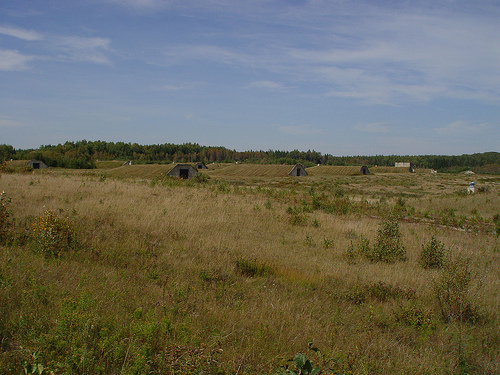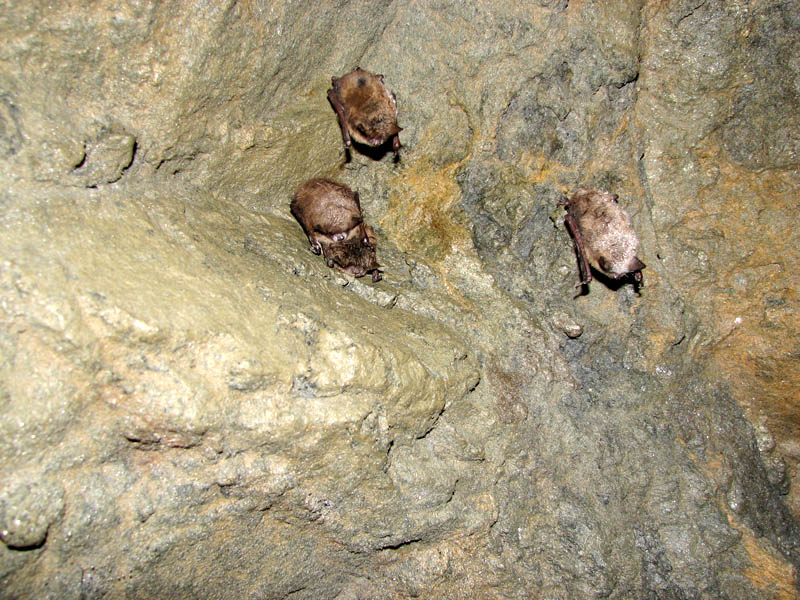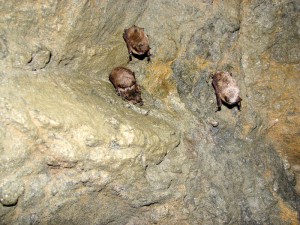
A lot has happened since I first wrote about White-Nose Syndrome, the fungal disease that has devastated bat populations in North America. The disease, caused by the cold-loving fungus Geomyces destructans (now renamed Psuedogymnoascus destructans), has been identified in many more places, including most recently confirmed cases in Georgia, South Carolina, Illinois and Missouri in the United States and Prince Edward Island, Canada.
Controlling the spread of this disease is a tremendous problem, because as I indicated in a previous blog post, keeping a hardy fungus from spreading among a population of densely packed small animals in tiny, cold damp areas is not a simple task.
This problem is going to require creative solutions, and scientists at the U.S. Fish and Wildlife Service may have come up with a great idea that answers two questions: How do you control the spread of White-Nose Syndrome and what do you do with 43 unused Air Force bunkers? Continue reading “Cold-War Bunkers Enlisted in the Fight Against Cold-Loving Fungus: More on the White-Nose Syndrome Story”


